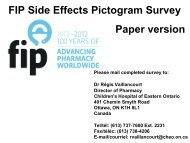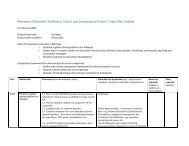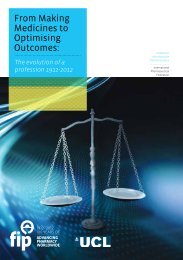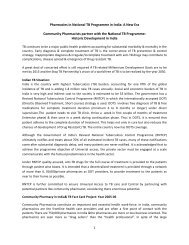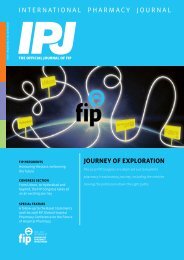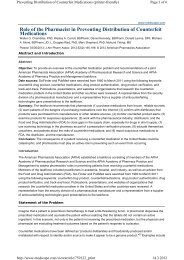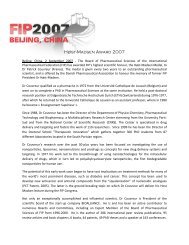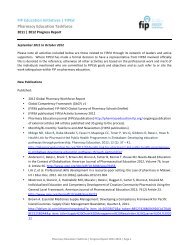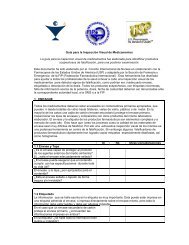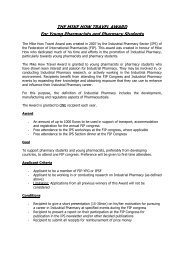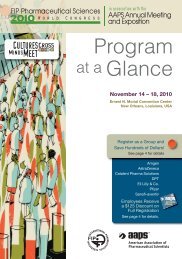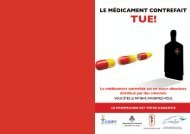Annual Report - FIP
Annual Report - FIP
Annual Report - FIP
Create successful ePaper yourself
Turn your PDF publications into a flip-book with our unique Google optimized e-Paper software.
18<br />
200 <strong>Annual</strong> <strong>Report</strong><br />
7<br />
8<br />
? what kind of perceptions and attitudes parents have about medicines<br />
? how parents' own medicine use and attitudes influence children's medicine use<br />
? from which sources parents search for information concerning child's medicine use<br />
? which information sources are considered reliable by parents<br />
Materials and methods<br />
The study progresses in three phases<br />
1) Pilot study (PHASE ONE)<br />
The Children's medicine use questionnaire (CMUQ), developed in Finland was pilot tested among<br />
Australian parents. The questionnaire was translated from Finnish to English then back-translated to<br />
ensure semantic equivalence of the English questionnaire to the Finnish version. A total of 153<br />
parents/main caregiver of a child aged 0-15 years were recruited via convenience sampling. Construct<br />
validity of the attitudinal section of the CMQ was performed using exploratory factor analysis. To test<br />
the reliability of statements contained in the instrument, the internal consistency was assessed using<br />
Cronbach's alpha coefficient.<br />
2) Focus groups (PHASE TWO)<br />
Focus group discussions (FGD) with parents of different aged children under 15 years were conducted.<br />
Three focus groups were conducted to explore participants' attitudes towards medicating children and<br />
to triangulate quantitative data.<br />
3) National survey (PHASE THREE)<br />
This phase will use the validated instrument to survey a national sample. This data will inform the<br />
design of education packages for children and their carers.<br />
Results (Phase 1 and 2)<br />
Factor analysis generated a parsimonious four factor solution explaining 50% of variance in the data.<br />
The four subscales representing the four factor solution each returned a Cronbach's Alpha coefficient<br />
> 0.6, indicating good internal consistency. Participants in focus groups were satisfied with the structure<br />
and content of the questionnaire. There were five themes that emerged from focus groups regarding<br />
the perception of medicines use in children. These included: concerns about the negative effects of<br />
medicines, the necessity of prescription medicines for treating illness, the sufficiency of the body's<br />
natural process in fighting illness, the efficacy of over-the-counter medicines, and the use of alternative<br />
medicines in children. Interestingly, most themes discussed in the focus groups were reflected in the<br />
factor solutions.<br />
Implications for further studies and pharmacy practice<br />
The findings of this study to date have shown that the CMQ is a valid and reliable instrument. Small



